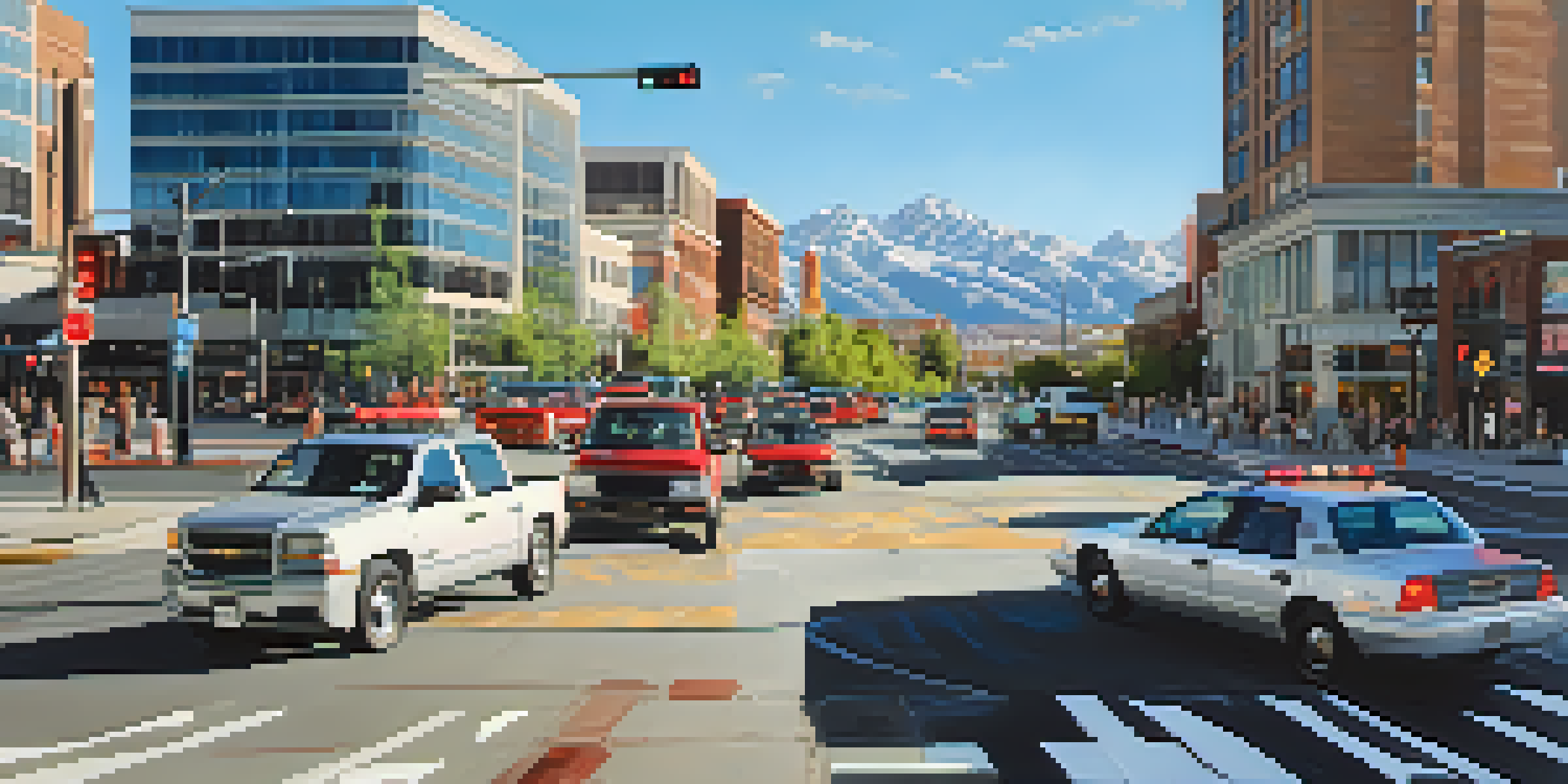Utah's Traffic Management: Innovations and Strategies

Overview of Utah's Traffic Management Challenges
Utah's rapid population growth has led to significant traffic challenges. With more residents comes increased vehicle numbers, creating congestion on major highways and local roads. This situation not only affects daily commutes but also impacts air quality and overall quality of life.
Good traffic management is about making the best use of the existing transport system, ensuring everyone can travel safely and efficiently.
The state's unique geography, including mountains and valleys, complicates transportation further. For instance, areas like Salt Lake City experience bottlenecks due to limited routes through the Wasatch Range. Understanding these challenges is crucial for developing effective traffic management solutions.
Addressing these issues requires innovative strategies that consider both current needs and future growth. Utah's approach combines technology, infrastructure improvements, and community engagement to create a comprehensive traffic management plan.
Smart Traffic Signals: A Technological Leap
One of the most notable innovations in Utah's traffic management is the implementation of smart traffic signals. These signals use real-time data to adjust their timing based on current traffic conditions, reducing wait times and improving flow. This technology helps to alleviate congestion during peak hours.

For example, in areas where traffic often backs up, smart signals can extend green light durations for certain directions when heavy traffic is detected. This adaptive approach not only benefits drivers but also emergency vehicles by allowing quicker access through busy intersections.
Traffic Challenges from Growth
Utah's rapid population growth has led to increased congestion on roads, impacting commutes and air quality.
By leveraging technology, Utah is not just managing traffic; it is actively improving the driving experience. As more cities adopt similar systems, the potential for reduced congestion and enhanced safety becomes a reality.
Public Transportation Enhancements in Utah
Utah is making significant strides in enhancing its public transportation systems as a means to combat traffic issues. Expanding bus and rail services encourages residents to opt for public transport instead of personal vehicles. This shift can lead to fewer cars on the road and lower emissions.
The future of transportation lies in smart solutions that enhance mobility while reducing environmental impact.
Recent initiatives include the introduction of more frequent bus routes and the expansion of the FrontRunner commuter rail service. These improvements make it easier for people to choose public transport, ultimately contributing to a more sustainable traffic ecosystem.
Additionally, educational campaigns aim to promote the benefits of public transit, such as cost savings and reduced stress. By fostering a culture of public transportation use, Utah is setting the stage for long-term traffic relief.
Bicycle and Pedestrian Infrastructure Improvements
Recognizing the importance of alternative transportation methods, Utah has invested in expanding its bicycle and pedestrian infrastructure. By creating dedicated bike lanes and safe crosswalks, the state encourages residents to cycle or walk for short trips, reducing reliance on cars.
Cities like Salt Lake City have seen a surge in bike usage thanks to these improvements, making the urban environment more vibrant and accessible. Moreover, a healthy lifestyle is promoted when more people engage in biking or walking, benefiting both individuals and the community.
Innovative Traffic Management Tech
Smart traffic signals and data-driven solutions are being implemented to improve traffic flow and enhance safety.
These infrastructure enhancements also contribute to safer streets overall. With fewer vehicles on the road, the likelihood of accidents diminishes, making Utah a more inviting place for all types of commuters.
Data-Driven Traffic Management Solutions
Data plays a crucial role in Utah's traffic management strategies. By utilizing data analytics, traffic planners can identify problem areas and evaluate the effectiveness of implemented solutions. This evidence-based approach enables continuous improvement and adaptation to changing traffic patterns.
For instance, traffic cameras and sensors collect real-time data on vehicle flow, which is analyzed to optimize signal timing and road usage. This proactive approach not only alleviates congestion but also enhances safety measures.
Additionally, data sharing with the public through mobile apps provides drivers with real-time information on traffic conditions. This transparency allows for informed travel decisions, further easing the burden on roadways.
Community Involvement in Traffic Solutions
Another key aspect of Utah's traffic management is community involvement. Engaging residents in the planning process helps to ensure that solutions meet the needs of those most affected by traffic issues. Public forums and surveys allow citizens to voice their concerns and suggestions.
This participatory approach fosters a sense of ownership among community members, making them more likely to support and adhere to new traffic initiatives. For example, when residents express a desire for more bike lanes, city planners can prioritize those projects based on feedback.
Community Engagement in Solutions
Involving residents in traffic planning helps create targeted solutions that address local needs and foster support.
Moreover, collaboration with local organizations and schools can enhance awareness around traffic safety and alternative transportation options. By working together, communities can create a unified front in tackling traffic challenges.
Future Directions for Traffic Management in Utah
Looking ahead, Utah is poised to implement even more innovative traffic management strategies. The integration of autonomous vehicles into the transportation network presents exciting possibilities for reducing congestion and enhancing safety. As technology evolves, so too will the solutions available to address traffic issues.
Additionally, continued investment in infrastructure and public transportation will be essential for accommodating future growth. Funding for projects that enhance connectivity and accessibility ensures that Utah remains a leader in traffic management.

Ultimately, the goal is to create a seamless transportation experience for all users, whether they are driving, biking, or walking. With a commitment to innovation and collaboration, Utah is well on its way to achieving this vision.